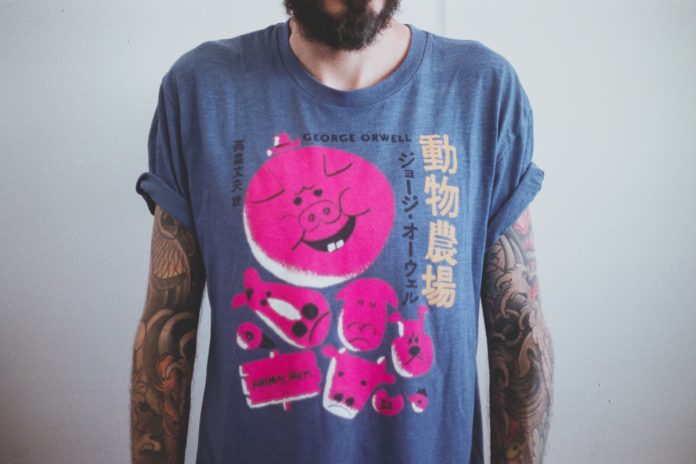Fashion changes constantly, but one thing remains constant — t-shirts. They will never go out of style. Their designs, colors and prints might fall in and out of the public taste, but the basic cut and outline of a standard t-shirt is immortal. They go with anything and everything. Tees can be worn on the outside or underneath a proper, elegant shirt on a chilly day. People love them to death and it doesn’t seem like that sentiment is going anywhere anytime soon.
T-shirts are also a powerful tool to convey a message, opinion, or even organize entire movements. The Hong Kong protests have become synonymous with people wearing black t-shirts, to the point that China has decided to ban the export of black clothing to Hong Kong altogether for a while! The sales of tees depicting Che Guevara’s face have been steadily high ever since the handsome revolutionary’s death back in the 1960s.
Nowadays, you can print anything on a t-shirt — all you need is an internet connection and an address with a zip code. However, the quality of the inprint and the fabric is not always guaranteed, and more often than not, manufacturers choose to save money on these aspects in order to increase profit margins. Depending on your budget and how many T-shirts you want, you can buy a garment printer to make all your T-shirt designs come to life in your home. How then can you ensure the best quality on your online-ordered shirt, so that it can last you for years to come?
Table of Contents
Shop locally
Your best shot at getting a quality, long-lasting piece of clothing with a print of your choosing is ordering it from a local supplier. Sites like TeeJunction (if you’re Australian) are good examples of how locally sourced t-shirt manufacturers provide their customers with the best product possible.
If a t-shirt gets sewn and printed on locally, there is a much bigger chance that the company producing it pays more attention to detail and provides professional supervision for each and every order. Since such businesses tend to focus on local markets, it makes a lot of sense for them to want to ensure the best quality of their products.
At this stage of growth, they simply can’t afford to outsource their production facilities overseas, which forces them to have to use local sewing and printing services. In most developed countries, the costs of producing anything are much higher than in other places, so in order to turn a profit, a local t-shirt startup needs to sell their clothes at much higher prices than the much richer competition.
This is where the importance of quality comes in — no one in their right mind can expect people to pay more for a crappy t-shirt they can get for 50 cents at Walmart. By charging more, these business owners are practically forced to make better products, which is why you should look around online for t-shirt businesses nearby, if you want your new tee to look cool for the next couple of years.
Printing techniques
Not a lot of people know this, but there is more than one way of getting an image or text on a fabric of the standard t-shirt. Like all things, these techniques also vary in prices and the final quality, which is why you should pay special attention to the method used by the company you want to order from. Below you will find just two of the most common printing techniques.
Screenprinting
By far and large the most popular way of printing things on clothes. It is very cost efficient and fast. The method of screen printing is especially effective if you want to place an order on a lot of shirts at once, all with the same print on them. On estimate, one gallon of paint will be enough to produce from 200 to 500 identical tees. The number depends on the size and density of your desired print, of course.
Given how quickly paint gets absorbed by the fabric when using this method, durability and authenticity of colors are ensured, making screen printing the best technique out there when it comes to the price-to-quality ratio.
Plastisol transfers
This is definitely one of the cheapest ways to make t-shirts with custom prints on them, which is why many manufacturers not only opt for it, but also outsource this process to other factories to further minimize the costs. It is similar to screen printing, however the design is first printed on a piece of plastisol transfer paper and then gets heat-pressed onto your tee.
If you choose a manufacturer that utilizes plastisol transfers in their production process, better make sure that they know what they’re doing. When done correctly, this technique can result in a similar quality to screen printing, however it is easy to botch the job, and that will result in cracked and disfigured designs after the first washing.
More expensive techniques
The aforementioned methods are the most popular, because they are the cheapest. Most local and global companies utilize them to manufacture their tees, with varying degrees of success. There are, of course, more advanced and costly techniques of printing on clothes, like dye-sublimation or direct-to-garment. Those are recommended if you are planning on making a tee for an important event or as a grand-occasion gift, as they make it seem as if the prints are part of the fabric itself.



















